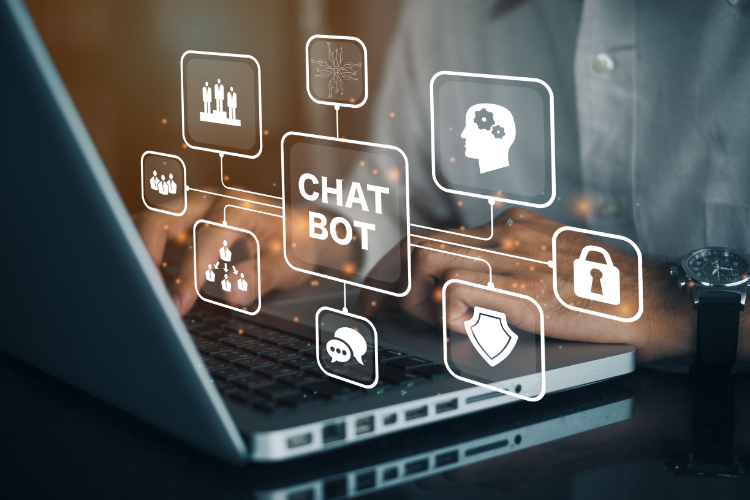Water — The Main Ingredient
At various points in my career, I have heard the argument that freshwater aquaculture makes more sen...

Since the middle of the 20th century, we have been living in the Information Age. Around that time, the concept of artificial intelligence (AI) arose, Turing’s idea that machines can “think” like humans or use information and reason to make decisions and solve problems. Expert systems were developed to allow computers to learn from experience (deep learning). With astounding computing power at our fingertips, we are now in the age of big data, where machines process huge amounts of information quickly to make timely decisions.
In the last decade, there has been a boom of applications of AI in aquaculture, many of them implemented in commercial salmon farming. Computer vision and machine learning algorithms that analyze images can be used to estimate biomass and precisely select candidate fish for focused disease treatment. Biomass estimated by image analysis or acoustic sensors, in combination with analysis of data from water quality sensors, can be used to optimize feeding using AI algorithms. Using historical data on growth rates, feed consumption and market demand, AI can be used to build predictive models that can predict optimal stocking and harvest schedules and manage logistics, thereby improving efficiency.
Recently AI chatbots have surged in popularity, particularly the program ChatGPT, available from OpenAI.com. AI chatbots generate automated responses to questions posed by human users and mimic human conversation. AI chatbots are examples of socalled Large Language Models that uses machine learning of the huge amount of information available from online sources across the Internet to provide text responses to queries. How then might AI chatbots be applied in the aquaculture domain?
For aquaculture farms and businesses, AI chatbots can be used to assist in making informed decisions quickly. For instance, chatbots can provide real-time updates on weather conditions, water quality and disease outbreaks, helping producers to make informed decisions and adjust their practices accordingly. Chatbots can provide instant access to reliable information and resources to help manage farms and facilities efficiently.
AI chatbots can also help farmers and students access training and education resources, functioning like a virtual extension specialist. By integrating chatbots into e-learning platforms, personalized training to improve knowledge and skills about aquaculture subject matter can be delivered on demand. AI chatbots can provide technical assistance to farmers, students and aquaculture professionals. For AI chatbots to be effective as a learning tool, they must be designed with specific needs in mind. This means that chatbots must be trained using data and information that is relevant to the user, such as those on water quality, feed management and disease prevention, among others. Additionally, chatbots must be able to understand the nuances of aquaculture language, such as technical jargon and industry-specific terminology.
For students and aquaculture research scientists, what is the role of AI chatbots in scientific writing? Researchers at Northwestern University and the University of Chicago generated fake abstracts using ChatGPT and reviewers were unable to detect them about onethird of the time. The AI tool has even been given authorship credit on at least four published papers, according to Nature. Science and Nature have banned the use of text from AI chatbots in scientific papers submitted to those journals, citing “attribution of authorship carries with it accountability for the work, and AI tools cannot take such responsibility” as the rationale for the decision.
There appears to be a high potential for misuse of AI chatbots in scholarly writing to produce fraudulent papers. ChatGPT responses are not identified by plagiarism detection programs. Recent research has shown that ChatGPT’s responses to questions are generally wellwritten, but formulaic, and appear plausible, but may be false, biased or misleading. Thus, information generated by AI chatbots needs to be verified and should not necessarily be taken at face value.
How then should AI chatbots be used responsibly? The World Association of Medical Editors recommends that 1) chatbots cannot be authors, 2) authors should be transparent when chatbots are used and provide information about how they were used, 3) authors are responsible for the work performed by a chatbot in their paper and for appropriate attribution of all sources, and 4) editors need appropriate tools to help them detect content generated or altered by AI. Editors of peer-reviewed aquaculture journals, including the Journal of the World Aquaculture Society, would do well to establish similar editorial policies that restrict the use of text generated by AI chatbots.
The rise of AI chatbots is raising alarms in universities and forcing professors to issue guidelines on their use in writing assignments. Some professors are opting for more oral exams, group projects or hand-written in-class assessments. Ultimately, it’s an issue of academic integrity that must be addressed and embraced by students as a question of ethics in university honor codes. Students (and research scientists) need to learn how to write with a distinctive voice, beyond the bland, computer-generated text produced by AI chatbots.
The rise of AI chatbots, ChatGPT specifically, has been described by some as revolutionary. That may be hyperbolic exaggeration, but there is certainly a lot of buzz about the potential use (and misuse) of this latest development in AI. Google and Microsoft have recognized this as a competitor, if not a threat, to the use of their vaunted search engines.
Aquaculture professionals are encouraged to try out AI chatbots to see what they can do to add value to their professional lives, whether it is creating new content, such as reports, manuals or fact sheets, answering open-ended analytical questions, or providing guidance to aquaculture producers and other stakeholders. The excitement around the potential benefits and applications of AI chatbots should be tempered with an understanding of their limitations and potential for misuse. It remains to be seen what will come of AI chatbots, but the genie is out of the bottle, and we can only hope to channel their use for constructive purposes
. — John A. Hargreaves, Editor-in-Chief